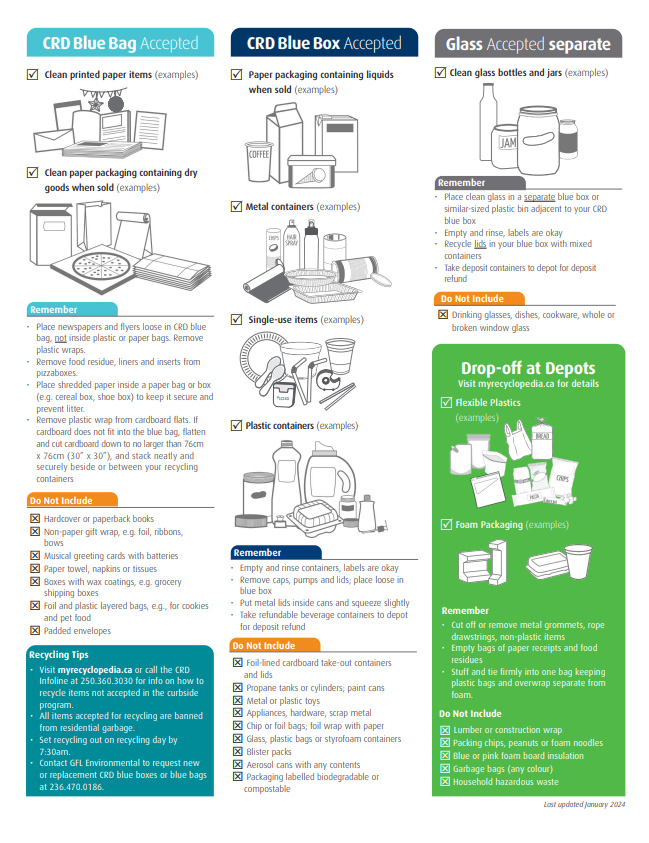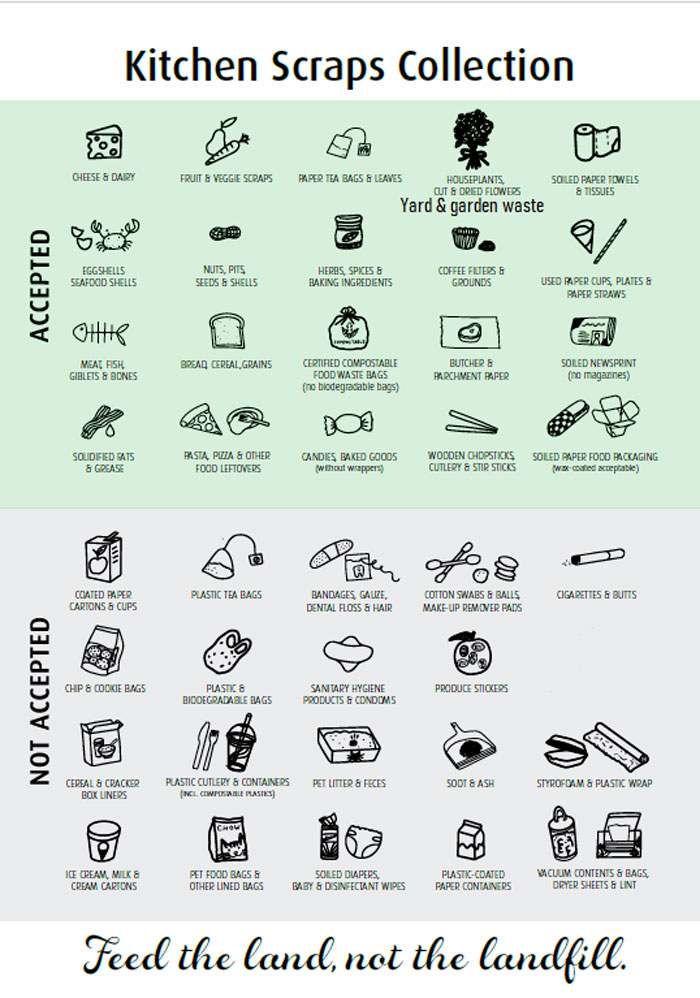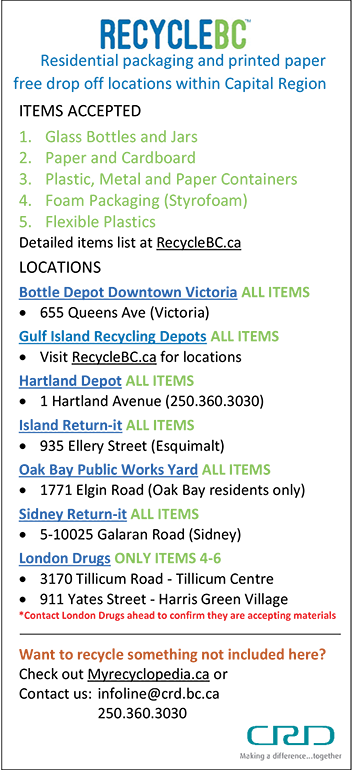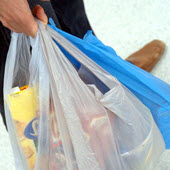Each year, municipalities around the world generate up to 2.3 billion tonnes of solid waste that ends up in landfills. Urgent action is needed. Not only are there significant economic implications for managing this amount of waste, but this also poses substantial threats to climate change, human health and well-being, and biodiversity loss. While waste is a collective challenge, it is also an opportunity. Eliminating waste can be a great way to conserve resources, protect our natural spaces, and even save money!
The District is developing a Zero Waste Strategy
The 2020 Saanich Climate Plan identified the need to develop a community-wide zero waste strategy (Action F2.2). In May 2024, Saanich Council endorsed the Terms of Reference [PDF - 293 KB] to begin development of the strategy. Work on the strategy is currently underway and aims to be completed in Q1 2026.
What is zero waste?
Zero waste actually means getting to zero! In Saanich, our goal is to drastically reduce the amount of waste our community generates and sends to the landfill.
How can we do our part?
Getting to zero waste is not just about putting the right materials into the right bins. It begins with curbing our consumption, followed by producing as little waste as possible – which includes repairing, repurposing, and reusing what we have - and then composting and recycling what is left. Putting waste into the landfill should always be our last option.
Click on the categories below to find tips on how you can do your part!
- Say no thank you to the take-out utensils, napkins, and other single-use items.
- Only buy what you need.
- Pause before a purchase – take a minute or a week to decide if you need it. See if you can use what you already have or source it second-hand.
- Unsubscribe from stores’ mailing lists to reduce the temptation of purchasing.
Reduce the amount you buy / use
- Use up what you have! Don’t needlessly buy goods such as shampoo, make-up, and food until you finish what you have at home.
- Check out Love Food Hate Waste Canada.
- Reduce packaging: use bar soap and shampoo bars, bring a reusable bag, opt for items in more sustainable packaging (e.g., paper over plastic).
- Check out refill options: there are local refill stores and some grocery stores offer refill options for items such as syrup or peanut butter.
- Challenge yourself to go shopping in your own closet by creating new outfits with what you already have.
- If you have children, try a toy rotation to reduce the number of toys. Simply store and switch out their toys every month. To them, the toys will feel new!
- Focus on gifting experiences rather than items. For example, a playdate or an art class.
- Buy in bulk: many grocery stores have bulk sections for common staples. This is often more cost effective and you may be able to bring your own container.
- Advocate for change: email companies and tell them your concerns!
Repurpose, Repair, & Reuse your stuff
- Repair items before replacing them. There are furniture, appliance, and electronic repair companies that can help. Repair cafés are also gaining popularity and often offer free services.
- Get crafty! Find a fun patch to repair your clothing or turn a pair of pants into shorts.
- Donate items you no longer need:
- Electronics can often be donated to organizations that will repair and donate them to schools and organizations.
- There are many donation drop-off centres around Saanich and Victoria: furniture, electronics, books, clothing.
- Get creative! Wash the labels off old jars and reuse them as a vase, pencil holder or lunch container.
- Buy second hand rather than new. There are lots of thrift stores and online sites to buy used items. You can also try consigning your own items.
Recycle / Compost if you can no longer reuse it
A 2022 study found that 56% of what was found in Saanich’s black carts should have been recycled or composted. 28% of this was organics.
Do your part by putting materials into the correct bin.
Dispose as the very last option
Challenge yourself to throw out as little as possible over a one month period! You will be surprised at how much you’re able to minimize your waste.














